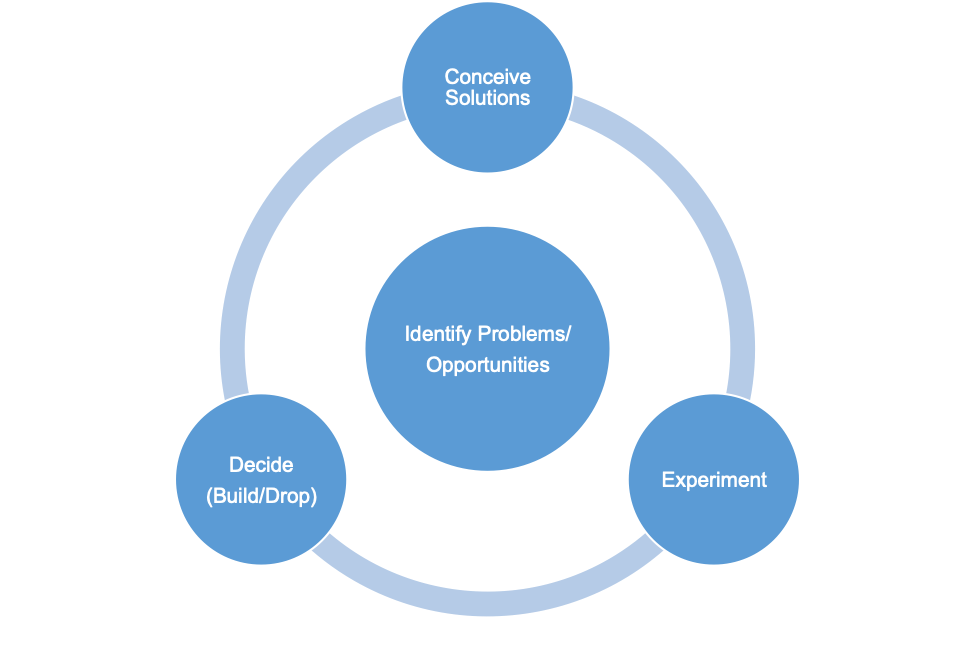- Call: 0203 427 3507
- Email: innovation@clustre.net

I was at an event the other day when two things really spoilt my day…
The first twinge of aggravation came in the big plenary session. Our host announced that we were about to be shown some videos of front-line staff describing their work frustrations and, in particular, the obstacles that prevented them from doing a better job.
Now that sounded like a great initiative, so my curiosity was aroused…
The camera focused on a broad group of internal stakeholders and, very soon, a number of consistent themes and issues began to emerge. My attention was now well and truly grabbed. I waited with interest – and high expectations – for the host to explain how these concerns will be addressed and resolved. And I waited… and I waited… and slowly it dawned on me that I was going to be seriously short-changed.
“These videos illustrate how important it is to listen to your front-line staff,” he explained – completely ignoring the fundamental truth that front-line feedback is only valuable when it is turned into actionable, positive outcomes. We had witnessed loyal staff displaying real courage and passion in their filmed interviews – but the all-important reactions and resolutions, together with the 2-way communication from an appreciative management, were never even mentioned.
Then something else happened that stunned me – and many of my fellow delegates.
I attended a breakout session on the topic of innovation. One of the key speakers was an independent consultant who specialises in helping major enterprises establish a culture of innovation. I was happily nodding along to his presentation when he dropped this bombshell: “First and foremost, you must have a common approach to innovation. Control is critical. You can’t permit people to innovate in completely different directions.”
There was a metaphoric thud as several jaws hit the carpeted floor. We were stunned by this declaration. By definition, innovation is free-thinking and radical. It breaks the mould by breaking conventions and rules. Thought control is anathema to innovation… or is it?
That thought got me thinking…
I have spent most of my working life on innovation projects. And I have to concede that most of these projects needed a ‘process’. However, this ‘process’ is certainly not designed to inhibit freedom of thought. It is simply there to focus minds on real-world issues and solutions. Innovation projects have to be anchored in genuine need. If you lose sight of this reality, you will end up with a bunch of brilliant, tangential ideas that have absolutely zero commercial merit… and that is the quickest way to lose management support and funding for innovation.
So how do you create a ‘process’ that focuses innovation without inhibiting it? Well, hopefully, my diagram below will help to concentrate minds…

The starting point for all innovation projects is to make sure you focus on solving your biggest problems and/or your biggest opportunities. There are several ways in which you can identify these problems. You can:
The trick is to:
If the starting point for innovation is to understand needs and frustrations, then the next step in the process is to Conceive Solutions. Some people think of this as a scientific process – a technology-fuelled trip into the outer realms of possibility. I disagree. Essentially, innovation comes from inspired team-building – blending talents and personalities to create the right human chemistry. Here are a few guidelines:
But, of course, the true merit of any pie is in the eating. Most people struggle with concepts – they can only judge an idea when they see the reality of a product. That’s why I always urge clients to move swiftly from conception to creation: Experimentation.
This is probably not the forum for diving deep into the prototype process. However, I would like to share the fascinating experience and advice of a close client – the global head of innovation for a global loyalty card operator…
Once you have developed a prototype it should be shown to the customer representatives and major stakeholders for their verdict. This is the acid test. The Decide (Drop or Build) decision will be taken there and then. And we can assume that a fair proportion will be buried at this point. However, don’t despair – this is an essential part of the ‘fail fast, learn quickly’ culture that breeds innovation success.
If a decision is taken to develop the prototype further, then this should be done in a very measured but agile way. Using a multi-functional team, the goal must be to create a MVP quickly and cheaply for business viability assessment.
Tools similar to the one used to surface frustrations can then be used to gauge the level of excitement generated by a new product. This can be invaluable – accurately measuring consumer appeal before any serious commitment is made to invest further in the MVP. What’s more, there are some really innovative marketing techniques – such as pretotyping – that can measure, with forensic accuracy, this consumer interest.
So that’s it – my process for innovation. Offer people unlimited freedom to question precepts, push boundaries and break rules. However, within that free-thinking environment, there has to be a healthy mix of blue-sky thinkers and grounded engineers… sensible and very essential budgetary controls… an immutable date for prototype delivery… and, most importantly of all, a very sharp focus on real-world customer frustrations. Those are the essential tenets for innovation success.